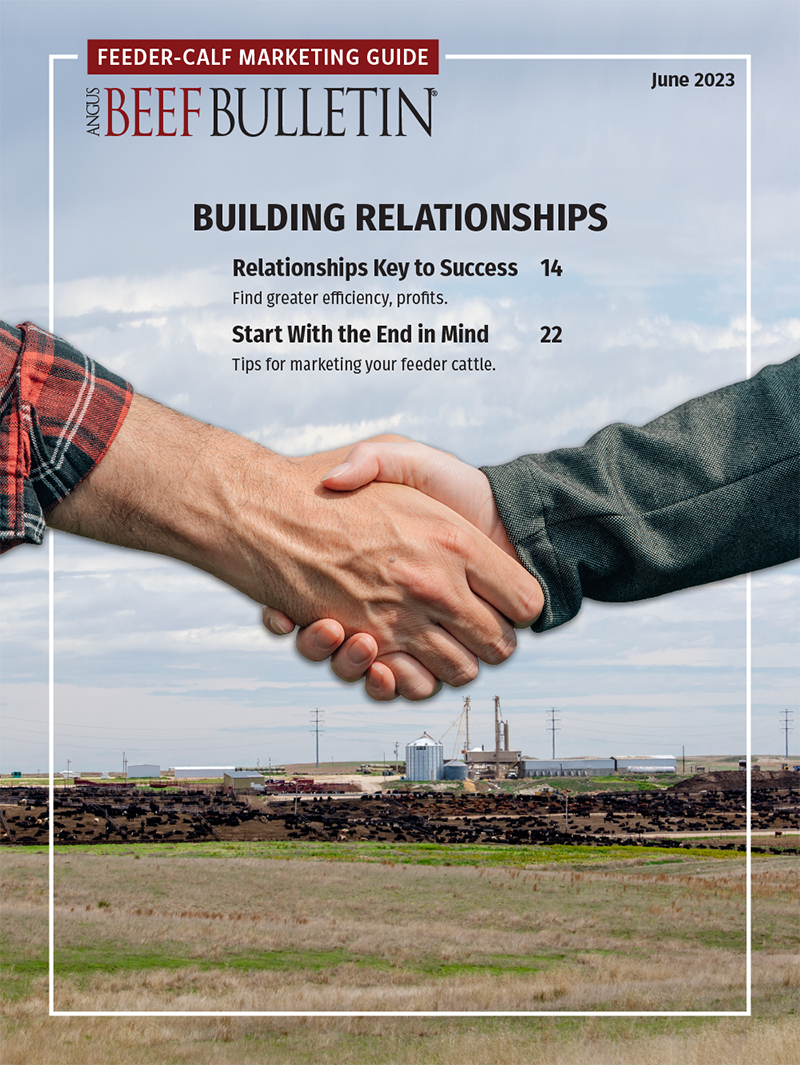
Don’t Feed Cows Like You Did 20 Years Ago
Genetics for growth and carcass traits have advanced. Has your nutrition program?
The cattle industry is constantly evolving, and producers must evolve with it to maximize the potential of their herd. Case in point: nutrition.
“If you look at what we’ve done from a carcass-quality standpoint in the last 20 years, it’s phenomenal, which is genetics. But we’ve got to feed those genetics,” says Ted Perry, nutritionist with Purina. “We can’t feed them like the cows of 20 years ago.”
On the Angus at Work podcast, Perry describes cows as the engine that drives our industry forward. It is important to properly maintain cow herd nutrition through the many production stages with available resources.
Historically, the focus has been on simply maintaining the body condition score (BCS) of animals. That is vital to cow health, but there is one other important clue for gauging nutritional success: manure scores.
Perry says body condition score is now being viewed as a long-term report card, while manure scores can provide a short-term view.
“We can literally walk through a group of cows and look at the manure scores, and tell how well the rumen is working, and how much they’re getting out of that forage,” says Perry.
Knowing how to interpret these scores allows producers and nutritionists, like Perry, to see their nutritional successes and challenges. (For more on scoring manure, click here.)
Feed the bugs
Many of these shortfalls are because of limited resources or low-quality forages. Perry suggests a mindset shift from “How do I save money while still feeding my herd?” to “How can I best utilize these forages I already have and set my herd up for success?”
“The rumen in a really amazing organ,” says Perry. “As long as we feed the bugs right, we’re going to get out of there everything we can.”
When faced with a lack of stored forages, Perry suggests some flexibility.
“That’s where we need to supplement them with a lot of cubes, a lot of grain mixes … so we’re feeding the rumen bugs, but we’re feeding them differently to get the energy out of the starch rather than trying to digest forage because there’s nothing to digest,” says Perry.
A cow’s needs change based on the time of year and production stage. Knowing when and what to feed through the year is crucial for sustaining her performance, as well as that of her calf.
“The better we feed that cow, especially when that calf is in utero, the performance of that animal after that is just phenomenal,” said Perry. “I don’t think we fully appreciate what goes on in utero yet, and how critical it is to feed that cow.”
Building colostrum and during lactation are peak nutritional demand periods.
“We really want that cow to be at a body condition score 6, because if she’s in a body condition score 6, she’s got all the nutrients to drop that calf, get good colostrum in that calf, and then turn around and breed in 80 days, which is what we need for a calving program,” he says.
Ensuring minerals for lactation and nutrients for her and the calf is a tall order considering how far genetics have come over the years. A cow that’s weaning off a 350-pound (lb.) calf represents a big difference in caloric need when compared to one weaning off a 600-lb. calf.
High-performing genetics require high-performance nutrition programs to support and sustain them, Perry reiterates. It is all in attention to detail.
“If I’m looking at improving my cow herd, or reevaluating my nutrition program, I’m going to start with the minerals. Once I have the minerals, we’re back to body condition score and manure scores,” said Perry. “But that all feeds off the same thing; we’ve got to feed that bigger motor, or she’s not going to perform.”
Listen to the full episode here:
Editor’s note: Taylor Edwards, an ag communications student at Auburn University, is the 2023 Angus Beef Bulletin summer intern.



